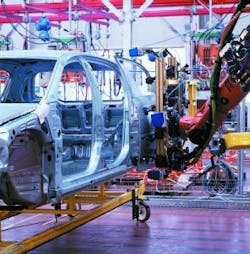COTS in space: automotive EEE components, part III
By Dan Friedlander
Retired following 44 years in component engineering
Cars are used by a very large number of users. Obviously, there is no practical need for all the car users to be knowledgeable in every technical detail of a car. Nevertheless, everybody wants to have a good, reliable car to meet the expectations. It is up to the potential car buyers to be aware of gimmicks designed to attract attention or increase appeal.
For example, not everybody is familiar with the professional meaning of the terms "quality," "zero defects," and "reliability". Nevertheless, the words "good quality," "reliable" is widely used in advertisements and in daily conversations without a deeper understanding.
The term "AEC-QXXX qualified" is used to identify "special" components, designed and tested to meet the "severe" automotive environment conditions and the mission criticality. Be aware of the real meaning of the terminology used in slogans. The above-mentioned term addresses an one time set of tests to be passed by sampled lots. The value of the qualification should not be exaggerated, mixing the terms quality and reliability.
Bosch at ESSDERC 2006 presented "Design Requirements for Automotive Reliability":
Requirements on automotive semiconductors
The term "operation time" (up to 15 years) may be misinterpreted in context of the subject reliability/semiconductors issue. Here is why.
Large portions of safety-critical embedded systems, such as automotive electronics, spend the majority of their life in the non-operating state (dormant or storage).
Typical Values for Percentage of Calendar Time for Equipment in the Dormant Condition [Harris, 1980].
CARS - Personal Use - Taxis | 93% 38% |
The above automotive mission profile is less severe than it may look like in the above Bosch presentation table. The operating/nonoperating ratio has a huge impact on major reliability contributing parameters, like temperature and electrical stress.
It has to be mentioned that only a part of the automotive electronics is safety-critical. For example, infotainment systems(navigation system, vehicle audio, information access, etc.) are not critical. Also it should be mentioned that automotive electronics is only a subsystem in the car system. Even after a major transition from mechanical or hydraulic systems to electronically controlled systems (x-by-wire),the mechanical subsystem plays a major role in establishing a car reliability.
Conclusion
The term "AEC-QXXX qualified" is not a magic proof of better components. Like any term it has to be fully understood in terms of quality and reliability. “The proof of the pudding is the eating.”
Automotive-grade EEE components, as well as industrial-grade EEE components are subsets of the COTS population.
Selected COTS EEE components (minimum -40° - +85°C), although penalized within the present space policy, are viable candidates for space applications.
In general (there are always exceptions), space applications require less stringent environment conditions (exclude radiation) than an automotive application.
In most cases the dies and the package for both industrial and automotive versions are identical.
In general (there are always exceptions) for space applications, the industrial operating temperature range meets the requirements.
The term "AEC-QXXX qualified" addresses qualification and requalification tests only. Traditional screening is not required.
The term "screening" in context of automotive components is often used for electrical screening at extreme temperatures.
Lot by lot testing requirements flows accessibility depends on the purchasing potential of the customer.
The automotive customer is a large volume, valued purchaser.
Many large volume automotive electronic system manufacturers DO NOT buy “catalog” automotive grade EEE Components. Instead, they procure via internal SCDs based on “AEC-QXXX qualified” catalog items.
The space customer is a small volume purchaser.
The automotive electronic components market size in $ is approx. 10%, much higher the military/space electronic components market (0.3%).
The automotive and industrial grades difference/value added cannot be fully assessed due to lack of access to the relevant information.
If the industrial grade meets the intended space requirements, it is not clear whether it is worth to prefer the automotive grade path, tailored for the automotive industry.
Both industrial and automotive grades' availability security is better than the availability security of space/military grade, due to the relevant market size.
Any reliability assessment of the automotive mission should take into account the relevant hardware and software in operating and nonoperating modes.
Unless you are an automotive large volume user, you have to rely heavily on the Components Manufacturers for both automotive and industrial grades.
Read more of Dan Friedlander's articles: Click here to visit his page.
Author biography

